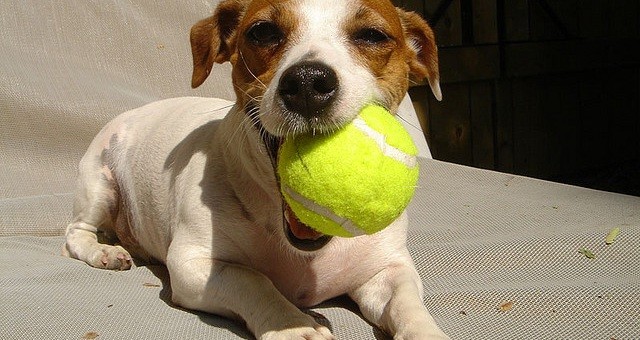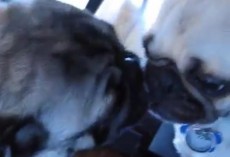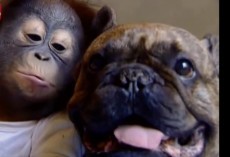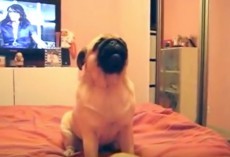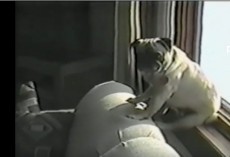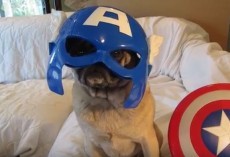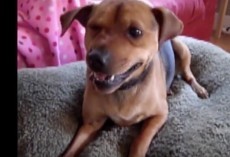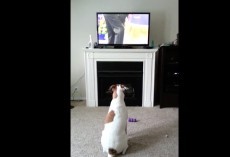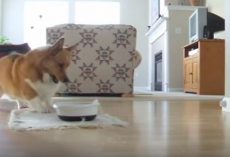See — playing fetch is as easy as pie if you follow the directions from ASPCA below. It may take a bit of patience and repetition on your part, but once you teach Fido that playing fetch is a rewarding and bonding experience, he'll soon get the hang of it. Playing fetch is much too fun NOT to learn how to do it!
Choosing the Right Toy
Dogs can be very particular about the toys they’ll play fetch with. Some prefer a tennis ball, others a Frisbee®. Still others are happiest with a plain old stick. Experiment with different toys and see which ones excite your dog the most. There are a host of good fetch toys on the market. Here are a few popular choices to try:
•Tennis ball
•Retriever plastic or rubber bumper
•Air KONG® squeaker tennis ball
•Soft Bite Floppy Disc® or the BOODA® Flyer™
•KONG Flyer (made of soft, flexible rubber)
•Hyperflite® Jawz™ Disc (semi-flexible plastic Frisbee made specifically for disc dog competitions), SoFlite™ Disc (extra-soft for sensitive mouths) or FrostBite™ Disc (stays soft and flexible in cold weather)
•KONG Toy (comes with or without a rope attached)
•Chuckit!® Flying Squirrel fetch toy (also comes in a plush form)
•Planet Dog Orbee-Tuff® Orbee BallIf your dog doesn’t like to put toys in his mouth, try soaking a plush toy or a tennis ball in chicken stock or stuffing an old sock with treats. This will entice him to taste the toy, and you can reward him for this by giving him a treat. He’ll soon figure out that putting the toy in his mouth pleases you to no end, and then you can start teaching him to fetch it.
The Reluctant Retriever
For dogs who really don’t grasp the concept of chasing after toys at all, you need to start with the basics. If your dog likes to play tug-of-war, teach him to go get a fetch toy so that you can play tug with it. Start by playing a short game of tug with a soft toy that your dog likes to tug on. Then take the toy from his mouth, tease him a bit by wiggling it on the ground, and toss it just a few inches away. If your dog runs to the toy, immediately snatch it up and start another fun game of tug. If he just stands there and looks at the toy you’ve thrown, reach out and wiggle it around on the floor again until he finds it irresistible. As soon as he goes for it, toss it another few inches away. Continue doing this until your dog chases after the toy.
On the other hand, if it’s treats that your dog likes, you can teach him to fetch a toy for the promise of a yummy tidbit. Show him the toy and toss it a few inches away. Even if he only watches the toy at first, praise him and give him a treat. After three or four repetitions of this, encourage him to chase after the toy. As he takes a step or two toward it, praise and give him a treat. Repeat this three or four times. Next, toss the toy and see if he’ll sniff it or put his mouth on it. If he doesn’t, touch it yourself—wiggle it a bit. The instant your dog moves his mouth toward the toy, praise and reward him with a treat. Ask for a little bit more from him each time, until he’s actually picking up the toy. enjoy it enough that you won’t need to give him treats each time he brings the toy back, but in the beginning, be sure to praise and reward him for every fetch.
The Bait-and-Switch Game
If your dog loves to chase and pick up the fetch toy but isn’t keen on bringing it back to you, try the bait-and-switch game with two identical toys. Show your dog one of the toys. Get him excited, throw it, and encourage him to fetch it. When he picks it up, call him, then show him the other toy, and act as though you’re going to throw it in the opposite direction. He’ll probably drop the first toy and come running to chase after the second one. While he’s chasing that one, go pick up the first toy and repeat the sequence. This exercise will get your dog used to picking up a toy and turning to run back to you. Here’s the next step: Call him when he’s picked up the first toy, but don’t show him the second one right away. Hopefully, he’ll turn and run back to you while still holding the first toy in his mouth. When he gets close to you, say “Drop it.” Then show him the second toy. He’ll drop the first toy in order to chase after the second one. Now you won’t have to walk so far to pick up the toy he drops.
•If your dog prefers to chase a Frisbee, be careful not to throw it so he jumps up into the air to catch it. Dogs can easily get injured jumping like this. Even though you may have seen disc dogs take spectacular flying leaps after their Frisbees, realize that their handlers know how to throw a Frisbee to minimize the chance of injury. Throw the Frisbee low to the ground so that your dog can still snatch it in the air but won’t have to jump up and then land on his rear legs.
•Keep your fetch sessions short, and end the game while your dog still wants to play. If he quits first, you risk him becoming bored of the game. Instead, leave him wanting more. If your dog is still a puppy (under 6 to 12 months old), be especially careful not to exercise him too strenuously because that could permanently damage his joints.

